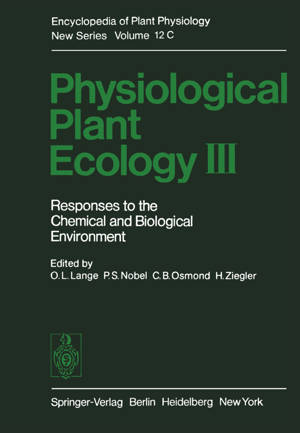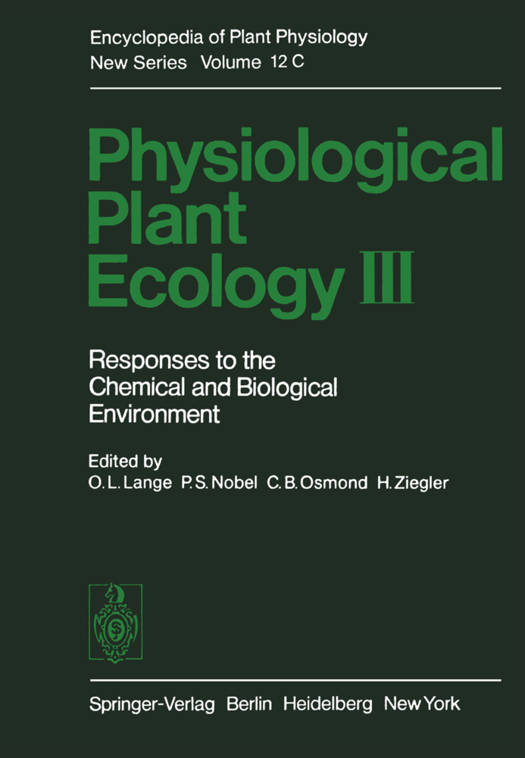
- Afhalen na 1 uur in een winkel met voorraad
- Gratis thuislevering in België vanaf € 30
- Ruim aanbod met 7 miljoen producten
- Afhalen na 1 uur in een winkel met voorraad
- Gratis thuislevering in België vanaf € 30
- Ruim aanbod met 7 miljoen producten
Zoeken
Physiological Plant Ecology III
Responses to the Chemical and Biological Environment
O L Lange, P S Nobel, C B Osmond, H Ziegler
€ 259,45
+ 518 punten
Omschrijving
O.L. LANGE, P.S. NOBEL, C.B. OSMOND, and H. ZIEGLER Growth, development and reproductive success of individual plants depend on the interaction, within tolerance limits, of the factors in the physical, chemical and biological environment. The first two volumes of this series addressed fea- tures of the physical environment (Vol. 12A) and the special responses of land plants as they relate to water use and carbon dioxide assimilation (Vol. 12B). In this volume we consider specific aspects of the chemical and biological envi- ronment, and whereas the previous volumes were primarily concerned with the atmospheric interactions, our emphasis here shifts very much to the soil. This complex medium for plant growth was briefly reviewed in Chapter 17, Volume 12A. Since it is difficult to determine the precise physical and chemical interactions in the soil, it is even more difficult to determine the important biological interactions among organisms. Nevertheless there is growing aware- ness of the significance of these interactions and their effects on physiological processes in the individual plant.
Specificaties
Betrokkenen
- Auteur(s):
- Uitgeverij:
Inhoud
- Aantal bladzijden:
- 799
- Taal:
- Engels
- Reeks:
- Reeksnummer:
- nr. 12
Eigenschappen
- Productcode (EAN):
- 9783642681554
- Verschijningsdatum:
- 18/11/2011
- Uitvoering:
- Paperback
- Formaat:
- Trade paperback (VS)
- Afmetingen:
- 170 mm x 244 mm
- Gewicht:
- 1283 g

Alleen bij Standaard Boekhandel
+ 518 punten op je klantenkaart van Standaard Boekhandel
Beoordelingen
We publiceren alleen reviews die voldoen aan de voorwaarden voor reviews. Bekijk onze voorwaarden voor reviews.








